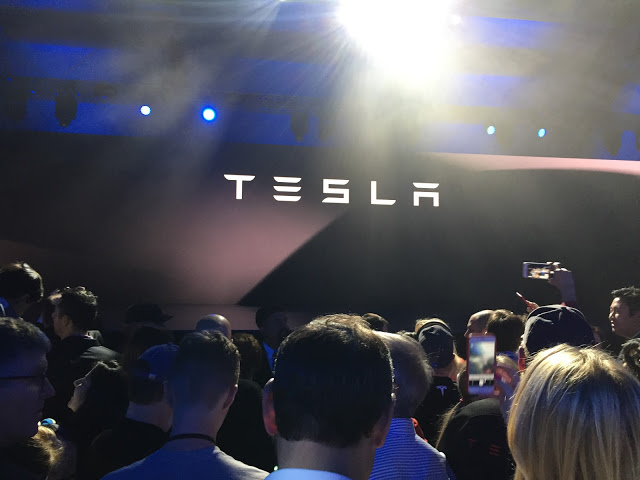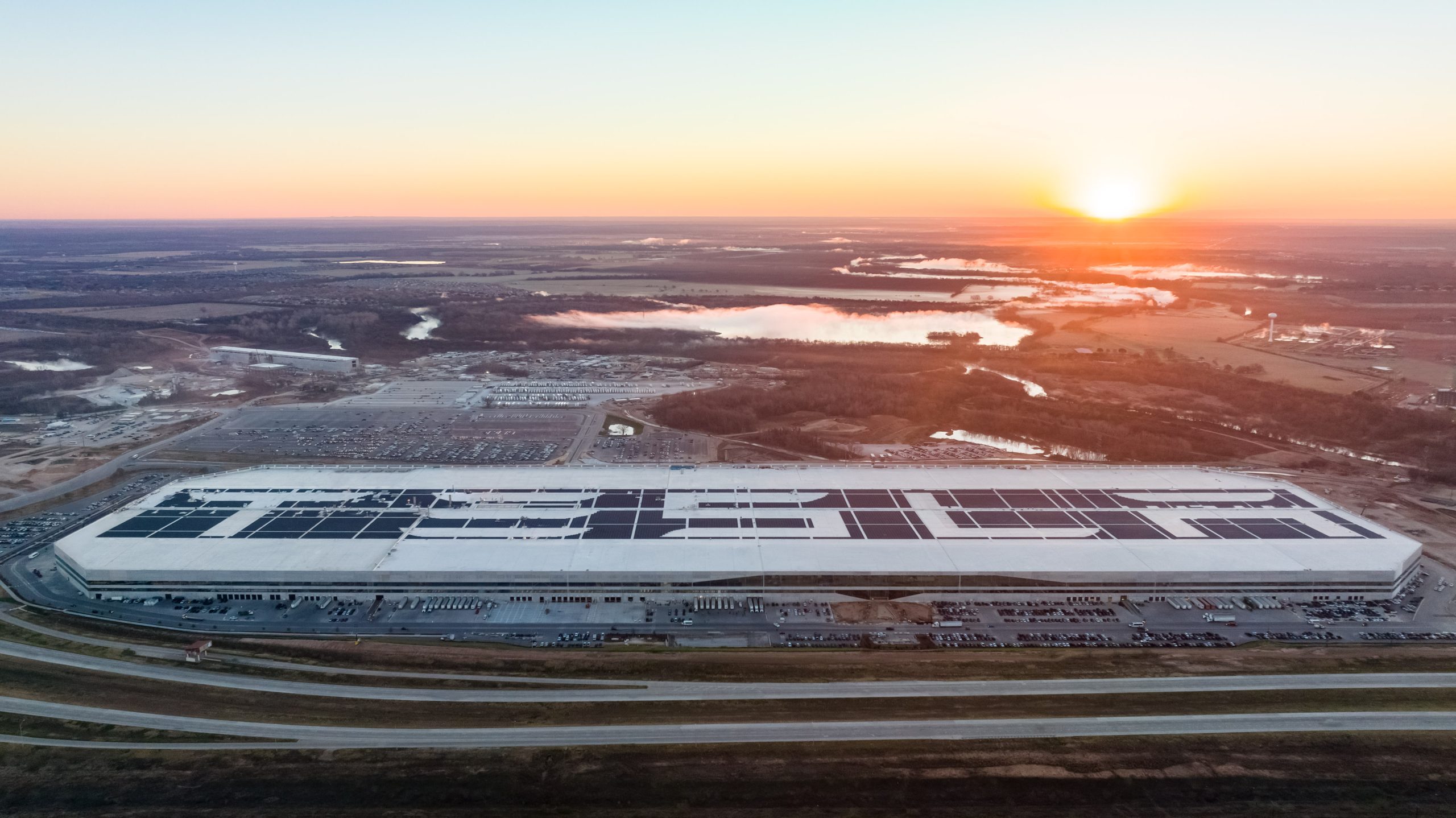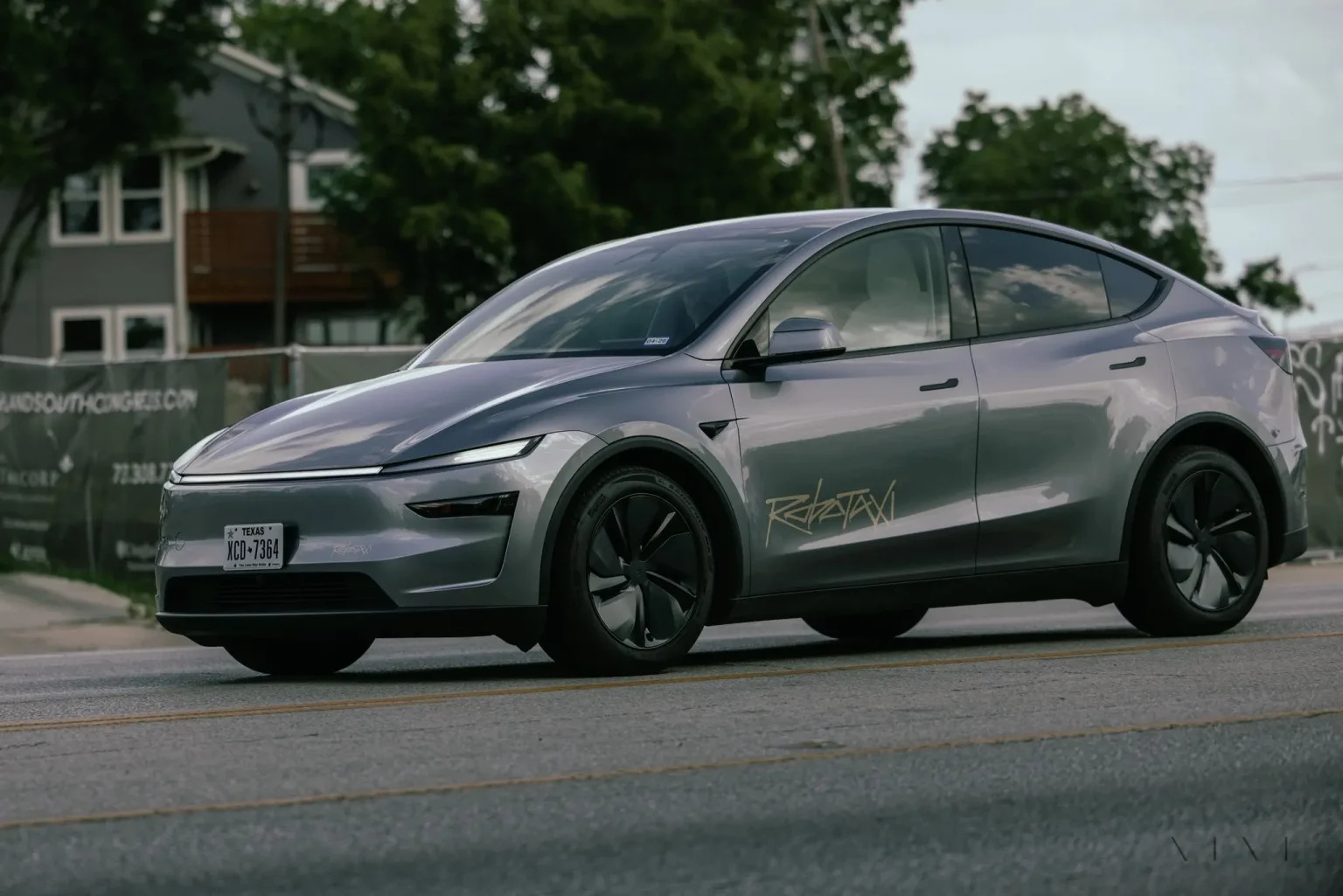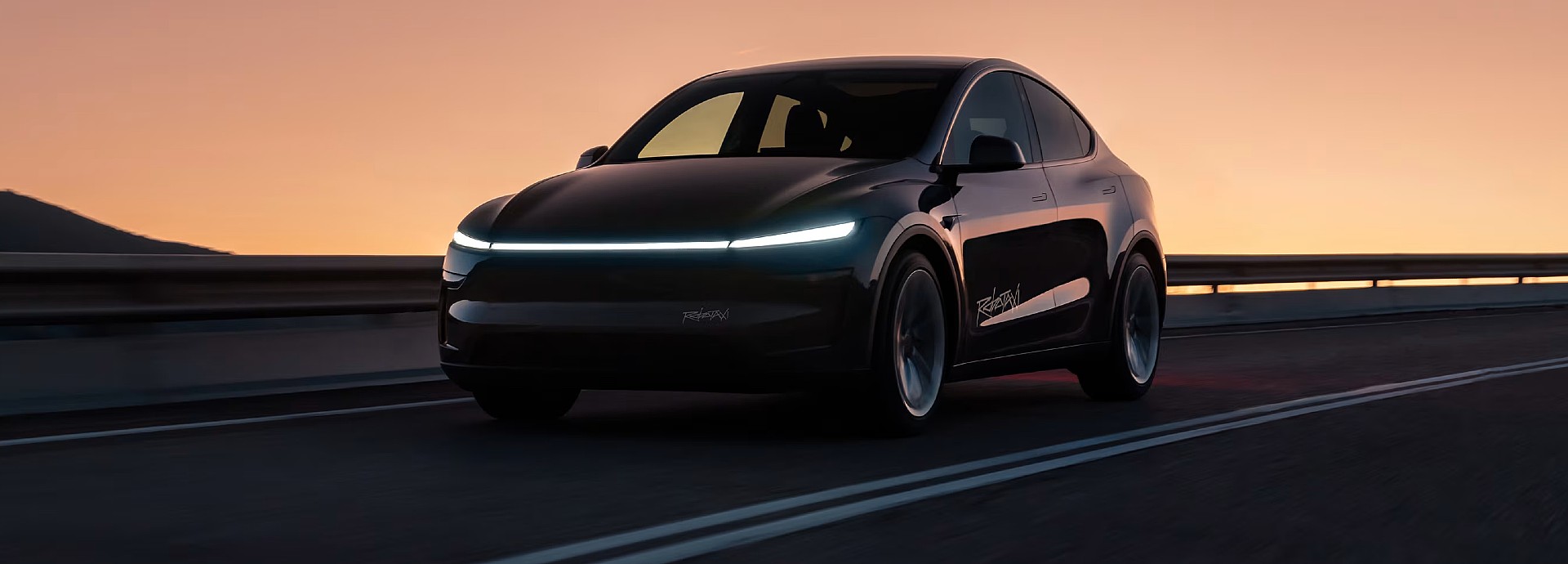Investor's Corner
The Anatomy of a Tesla ($TSLA) Trader Analyst

Hi, my name is …
Marco Papa. I am a techie by trade and very much a product of the first dot com boom (and bust) of the 90’s. I originally came to this country from Italy to pursue a PhD in computer science at USC, back in 1981. I worked for 6 different dot-coms in the span of 10 years, starting as software developer, then system architect all the way to several CTO positions. All these companies, except one, no longer exist: they either were sold, or went bankrupt. But in the process I learned a lot about company valuations, private placements, and raising tens of millions of dollars from VCs, banks and brokerage houses. And yes, like many other Internet executives of the time, I owned a Ferrari 355 spider convertible. I’ll come back later to the Ferrari.
After 10 years of high-stress jobs, I decided to move to slower-paced “environments”: for the past 14 years I have held a daytime job working for state government and a nighttime job teaching Web Technologies at USC.
“Buy what you know”
But it is during the dot-com era that I started tinkering with Mutual Funds and stocks. For the initial 15 years I was an “investor”. I would purchase mutual funds and stocks and hold them for a minimum of a year. Then in 2005 something changed: I consolidated all my retirement funds from the various companies I had worked for into a single SEP-IRA at E-Trade and strangely enough, after answering a simple questionnaire, E-Trade gave me access to Level 2 Options trading. I did not know much about options then, so I subscribed to a service called the Options Oracle from The Market Guys (http://www.themarketguys.com), which recommends entry and exit points for options trades for a fee. I learned a lot, but I felt frustrated that I was trading options of companies I knew nothing about. So I decided to follow an investment method that I had learned when I used to hold shares in Fidelity Magellan Fund (https://en.wikipedia.org/wiki/Magellan_Fund), a fund with $20B of stock investments, and the best performing one between 1977 and 1990, averaging over a 29% annual return. Peter Lynch, Magellan fund manager at that time, created the investment method commonly referred to as “Buy What You Know”: invest in businesses that you understand “personally”, especially if you buy and own their products. Since that time, I have tried to follow the “Buy What You Know” method in all my investments and trades.
Interestingly it is at that time that I started making my “switch” from Windows to the Mac. My first Apple purchase was an iPod; I subsequently trashed a ThinkPad and bought a MacBook, and finally trashed an HP desktop and bought a Mac Pro. Today I own probably close to 25 Apple devices, once I count all the iPhones, iPads, Apple Extremes, Apple TVs, and Apple Watches my wife and I use daily. In 2006 I started “investing” in Apple stock. After the stock market crash of 2007, I started “trading” Apple options. Between 2006 and 2014 I made more money trading AAPL than any other stock. During that time, I added a few more stocks to my trading pattern: Netflix (NFLX), Amazon (AMZN), Google (GOOG), Facebook (FB), Starbucks (SBUX) and more recently Tesla Motors (TSLA). These are all companies that qualify for the “Buy What You Know” mantra: I either buy their products regularly or use them in my daily life.
$TSLA to P90D
I started reading about Elon Musk since he founded PayPal. I read about his promotion of sustainable energy as a way to save our planet. In 2012 I installed solar panels in my house in Redondo Beach, CA. In 2013 I replaced my energy-hog 2007-vintage Mac Pro with a low-energy Mac Pro (a.k.a. the “can”). In 2014 I switched all light bulbs in my house (over 300 of them) from incandescent to low-energy LEDs. And in 2015 I bought a red Tesla Model S P90D (a.k.a. Red Five X-wing). By now my carbon footprint is in pretty good shape.
I started trading TSLA options in early 2014. By summer of 2015 I had enough profits from option trades in TSLA, AAPL and SCO to pay in cash 2/3 of the price of my P90D.
After trading TSLA for over two years I have a few opinions on how to invest or trade it. A stock for me is a good “investment” if it can be held for about 5 years, and provide annual stock gains of 5-10% per year. If you had purchased TSLA stock at the IPO in 2010 at about $19, you would be sitting pretty at a 10-bagger at $250, 6 years later. But if you had purchased it in March 2014 at $265 you’d be about even, two years later. Twice in the past couple of years TSLA stock raised to $275, while slamming back to $140-180 in just 6 months, both times. Tesla in my opinion is not yet a good long term investment.
Part of the reasons is that good long term investments are based on “fundamental” analysis of stocks. Fundamental analysis is based on analyzing the characteristics of a company in order to estimate its “value:” high earnings, income, high profit margins, and small debt are what investors are looking for. According to a recent thestreet.com article, “Tesla Motors has a ‘sell’ rating and a letter grade of D+ at TheStreet Ratings because of the company’s deteriorating net income, generally high debt management risk, disappointing return on equity, poor profit margins and feeble earnings per share growth.”
So if I would not recommend TSLA stock as an investment, why would I even consider TSLA for my trades? Because TSLA is a wonderful stock to trade, not on the basis of “fundamental” analysis, but on the basis of “technical” analysis. In finance, technical analysis is a security analysis methodology for forecasting the direction of prices through the study of past market data, primarily price and volume. The “value” of the company does not matter. Even just 10 years ago, trading on the basis of technical analysis was only for the pros: brokerage houses, money managers and hedge fund managers. Today individuals have access to tools, indicators, and “conditional” trades that make trading, and especially options trading, much easier and safer.
I consider myself a “swing” trader: I normally enter an option trade when at least 3 indicators are firing on all cylinders; I put conditional stops to lower my losses when the market goes against my trade, and get out of trades when indicators are turning negative.
Coming up
It turns out that TSLA is a fairly good “swing” stock, where the above methodology has worked well in the past. In the next few weeks, while covering the news about the company that can affect its stock price, I will introduce some of the tools, indicators and techniques that any trader can use to profit on TSLA. You’ll hear names like moving averages, pay-day cycles, MACD indicator, Heikin-Ashi charts, support and resistance lines. You will see that none of these are rocket science.
I will write a column, a couple of times a week, providing TSLA stock analysis, information on investing and trading TSLA stock and options, and covering TSLA earnings and all rumors and news that can affect the stock.
Now back to the Ferrari. The F355 Spider that I purchased in 1996 was priced at $137,000, had a top speed of 183mph, 375hp, 268lb-ft torque, and performed 0-60mph in 4.5s and the quarter mile in 12.9s.
The Tesla Model S P90D (Insane) I purchased in 2015 has a very similar price, $142,000, but with a top speed of 155mph, 691hp, 713lb-ft torque, and performs 0-60mph in 3.1s and the quarter mile in 11.7s. The Tesla sedan beats the Ferrari in all but the top speed rating.
But while you needed a Formula 1 driver to obtain those numbers in the Ferrari, mainly to change the gears at the exact right time, effectively anyone can get the Tesla numbers just by flooring the accelerator. The only thing I miss from the Ferrari is the “roar” of the engine; for everything else the Tesla is so much more fun.
Disclosure: I currently have no positions in any stocks mentioned, but I may plan to initiate positions within the next 72 hours. I wrote this article myself, and it expresses my own opinions. I am not receiving compensation for it (other than from Teslarati). I have no business relationship with any company whose stock is mentioned in this article.

Investor's Corner
Tesla stock closes at all-time high on heels of Robotaxi progress

Tesla stock (NASDAQ: TSLA) closed at an all-time high on Tuesday, jumping over 3 percent during the day and finishing at $489.88.
The price beats the previous record close, which was $479.86.
Shares have had a crazy year, dipping more than 40 percent from the start of the year. The stock then started to recover once again around late April, when its price started to climb back up from the low $200 level.
This week, Tesla started to climb toward its highest levels ever, as it was revealed on Sunday that the company was testing driverless Robotaxis in Austin. The spike in value pushed the company’s valuation to $1.63 trillion.
Tesla Robotaxi goes driverless as Musk confirms Safety Monitor removal testing
It is the seventh-most valuable company on the market currently, trailing Nvidia, Apple, Alphabet (Google), Microsoft, Amazon, and Meta.
Shares closed up $14.57 today, up over 3 percent.
The stock has gone through a lot this year, as previously mentioned. Shares tumbled in Q1 due to CEO Elon Musk’s involvement with the Department of Government Efficiency (DOGE), which pulled his attention away from his companies and left a major overhang on their valuations.
However, things started to rebound halfway through the year, and as the government started to phase out the $7,500 tax credit, demand spiked as consumers tried to take advantage of it.
Q3 deliveries were the highest in company history, and Tesla responded to the loss of the tax credit with the launch of the Model 3 and Model Y Standard.
Additionally, analysts have announced high expectations this week for the company on Wall Street as Robotaxi continues to be the focus. With autonomy within Tesla’s sights, things are moving in the direction of Robotaxi being a major catalyst for growth on the Street in the coming year.
Elon Musk
Tesla needs to come through on this one Robotaxi metric, analyst says
“We think the key focus from here will be how fast Tesla can scale driverless operations (including if Tesla’s approach to software/hardware allows it to scale significantly faster than competitors, as the company has argued), and on profitability.”

Tesla needs to come through on this one Robotaxi metric, Mark Delaney of Goldman Sachs says.
Tesla is in the process of rolling out its Robotaxi platform to areas outside of Austin and the California Bay Area. It has plans to launch in five additional cities, including Houston, Dallas, Miami, Las Vegas, and Phoenix.
However, the company’s expansion is not what the focus needs to be, according to Delaney. It’s the speed of deployment.
The analyst said:
“We think the key focus from here will be how fast Tesla can scale driverless operations (including if Tesla’s approach to software/hardware allows it to scale significantly faster than competitors, as the company has argued), and on profitability.”
Profitability will come as the Robotaxi fleet expands. Making that money will be dependent on when Tesla can initiate rides in more areas, giving more customers access to the program.
There are some additional things that the company needs to make happen ahead of the major Robotaxi expansion, one of those things is launching driverless rides in Austin, the first city in which it launched the program.
This week, Tesla started testing driverless Robotaxi rides in Austin, as two different Model Y units were spotted with no occupants, a huge step in the company’s plans for the ride-sharing platform.
Tesla Robotaxi goes driverless as Musk confirms Safety Monitor removal testing
CEO Elon Musk has been hoping to remove Safety Monitors from Robotaxis in Austin for several months, first mentioning the plan to have them out by the end of 2025 in September. He confirmed on Sunday that Tesla had officially removed vehicle occupants and started testing truly unsupervised rides.
Although Safety Monitors in Austin have been sitting in the passenger’s seat, they have still had the ability to override things in case of an emergency. After all, the ultimate goal was safety and avoiding any accidents or injuries.
Goldman Sachs reiterated its ‘Neutral’ rating and its $400 price target. Delaney said, “Tesla is making progress with its autonomous technology,” and recent developments make it evident that this is true.
Investor's Corner
Tesla gets bold Robotaxi prediction from Wall Street firm
Last week, Andrew Percoco took over Tesla analysis for Morgan Stanley from Adam Jonas, who covered the stock for years. Percoco seems to be less optimistic and bullish on Tesla shares, while still being fair and balanced in his analysis.

Tesla (NASDAQ: TSLA) received a bold Robotaxi prediction from Morgan Stanley, which anticipates a dramatic increase in the size of the company’s autonomous ride-hailing suite in the coming years.
Last week, Andrew Percoco took over Tesla analysis for Morgan Stanley from Adam Jonas, who covered the stock for years. Percoco seems to be less optimistic and bullish on Tesla shares, while still being fair and balanced in his analysis.
Percoco dug into the Robotaxi fleet and its expansion in the coming years in his latest note, released on Tuesday. The firm expects Tesla to increase the Robotaxi fleet size to 1,000 vehicles in 2026. However, that’s small-scale compared to what they expect from Tesla in a decade.
Tesla expands Robotaxi app access once again, this time on a global scale
By 2035, Morgan Stanley believes there will be one million Robotaxis on the road across multiple cities, a major jump and a considerable fleet size. We assume this means the fleet of vehicles Tesla will operate internally, and not including passenger-owned vehicles that could be added through software updates.
He also listed three specific catalysts that investors should pay attention to, as these will represent the company being on track to achieve its Robotaxi dreams:
- Opening Robotaxi to the public without a Safety Monitor. Timing is unclear, but it appears that Tesla is getting closer by the day.
- Improvement in safety metrics without the Safety Monitor. Tesla’s ability to improve its safety metrics as it scales miles driven without the Safety Monitor is imperative as it looks to scale in new states and cities in 2026.
- Cybercab start of production, targeted for April 2026. Tesla’s Cybercab is a purpose-built vehicle (no steering wheel or pedals, only two seats) that is expected to be produced through its state-of-the-art unboxed manufacturing process, offering further cost reductions and thus accelerating adoption over time.
Robotaxi stands to be one of Tesla’s most significant revenue contributors, especially as the company plans to continue expanding its ride-hailing service across the world in the coming years.
Its current deployment strategy is controlled and conservative to avoid any drastic and potentially program-ruining incidents.
So far, the program, which is active in Austin and the California Bay Area, has been widely successful.








